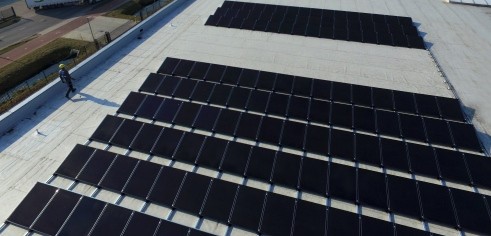
We still see fall protection Personal Protective Equipment (PPE) being used wrong. A list of do’s and don’ts can help us to learn the most important information in a quick and effective way. This blog contains a list of for employers and addresses what they should and shouldn’t do. Safety first isn’t just a slogan, it’s a code to live by.
The basics of fall protection PPE
Working at height, more often than not, requires users to wear fall protection PPE, such as a harness, to keep them safe. For work restraint systems the harness and lanyard combination will help prevent reaching fall hazards. In fall arrest systems the fall protection PPE will assist in stopping the fall and minimizing the forces exerted on the body.
Both systems have conditions to ensure proper safety, for example the length of the lanyard is very important. After all a lanyard that is too long won’t stop a person from falling over the edge (restraint) or hitting a lower level (arrest).

Bad practices with PPE
Fall protection PPE is quite literally a life saver if used correctly. Below are some of the don’ts of PPE, as doing these things puts people in danger.
What not to do
- Do not let untrained employees work at height.
- Do not provide untested or expired PPE to your employees.
- Prevent employees from starting the work if they do not wear the appropriate PPE for the job.
- Do not store PPE outside or in direct sunlight.
- Do not use fall protection PPE if it is damaged.
- Do not make adjustments to fall protection PPE. Even writing on a harness with marker can damage the webbing.
- Do not allow employees to use PPE that doesn’t fit them properly.
- Do not use equipment that has been involved in a fall without it being inspected by a competent person.

Good practices for PPE
We’ve looked at what you shouldn’t do, but we want to finish positively by stating the do’s of fall protection PPE. Using these do’s will help prevent dangerous fall hazards and allows workers to go home safe after the job is done.
What to do
- Provide all who work at height with proper equipment and training.
- Urge employees to take safety very serious, and provide a culture where workers can address each other on possible wrongful use of PPE.
- Make sure all equipment you provide is suitably tested and conform (local) regulations.
- If possible provide employees with their own PPE, that is perfectly suited to them. Pay attention to the fact that most harnesses are tested for a weight of max 130 kg (286 lbs).
- Ensure employees know their fall clearance and the corresponding maximum length of their lanyard.
- Store PPE in a clean, well-ventilated, dust free and dry place. Preferably offer a place on the jobsite so you can keep track of the proper storage of PPE.
- Ensure PPE are kept clean. Dirt and other substances can be rinsed of with water and mild soap. Also read our blog on how to maintain a safety harness, for instructions on cleaning a harness. If PPE is stored on site this can be checked easily.
- Have employees perform pre-work inspections of PPE before each use. Let them check for any damages or deformations. We have written a blog series with downloadable posters on inspecting a lanyard, examining a fall arrest device and checking a harness. Your employees can do this visual inspection themselves if you’ve trained them and the aforementioned posters can help them remember.
- When in doubt about the safety of PPE do not use it. Have a competent person check the equipment. If it is still suitable for use you’ll get confirmation in writing. If it isn’t, throw it out.
- Have all PPE inspected annually by the manufacturer, or a certified party.









1 Comment. Leave new
Safety is the first priority. Thanks for this informative blog on fall protection systems